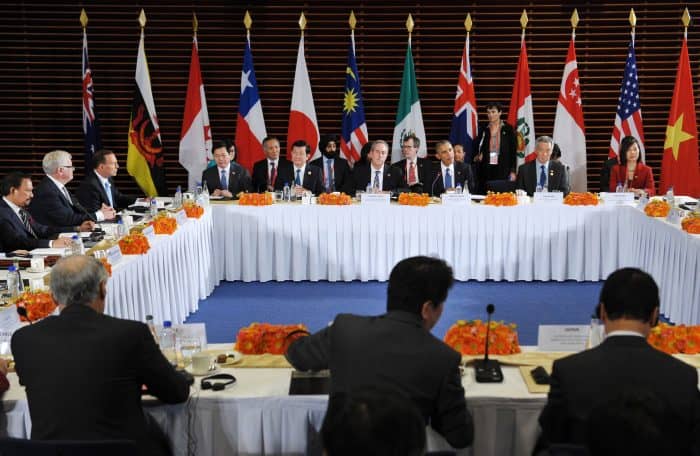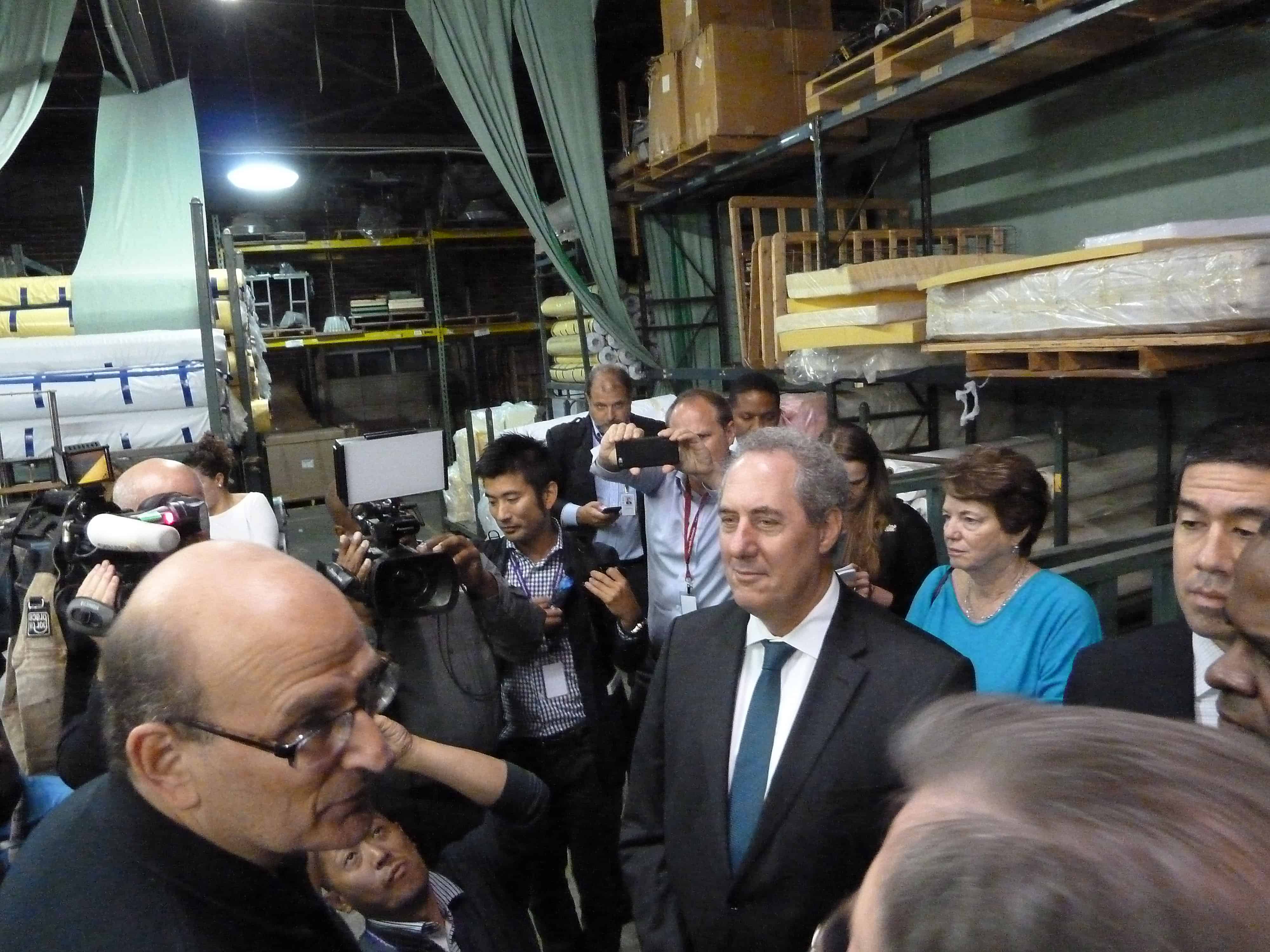ATLANTA, Georgia – Twelve Pacific rim countries sealed a Trans-Pacific Partnership deal early Monday on creating the world’s largest free trade area, delivering U.S. President Barack Obama a major policy triumph.
Working around the clock for days past their deadline, haggard trade ministers announced they reached agreement on the ambitious Trans-Pacific Partnership just before dawn, capping five years of difficult talks led by the United States.
The deal aims to set the rules for 21st century trade and investment and press China, not among the 12, to shape its behavior in commerce, investment and business regulation to the TPP standards.
“After five years of intensive negotiations, we have come to an agreement that will create jobs, drive sustainable growth, foster inclusive development, and promote innovation across the Asia Pacific Region,” said U.S. Trade Representative Michael Froman.
The hard-won deal to create the world’s largest free-trade area, encompassing 40 percent of the global economy, came after five days of round-the-clock talks in an Atlanta hotel.
President Obama, who made the TPP a priority of his second term, said the accord reached in Georgia “reflects America’s values and gives our workers the fair shot at success they deserve.”
“When more than 95 percent of our potential customers live outside our borders, we can’t let countries like China write the rules of the global economy,” Obama said in a statement. “We should write those rules, opening new markets to American products while setting high standards for protecting workers and preserving our environment.”

‘Trade deal for 21st century’
The accord involves significant market openings from Canada, the United States and Japan for farm products from sugar and rice to cheese and beef.
Japan has made major concessions to lower tariffs and reduce non-tariff barriers on food imports, long a challenging domestic political issue and a chronic sore point with major food exporters like Australia, New Zealand and the United States.
The United States agreed to lower its tariffs on Japanese car parts from non-TPP locations like China and Thailand, even though that hurts the privileged position in the U.S. market that the 1994 NAFTA trade pact gave Canada and Mexico — both in the TPP deal.
But more broadly, the agreement establishes mechanisms to handle disputes between foreign investors and governments; requires governments to not discriminate between their own state companies and foreign investors in major contracts; and demands countries like Vietnam, Mexico and Malaysia improve labor standards.
It also addresses new issues like data trade and intellectual property that have not been covered in multilateral trade pacts of the past.
Canada Trade Minister Ed Fast called the deal “truly transformational.”
“The magnitude and importance of rules for 21st century issues can’t be underscored enough. … It will shape the future for many trade agreements in this 21st century,” he said.
The talks went four days past deadline to resolve conflicts over Canada and Japan opening up their dairy markets to New Zealand exports, and objections from Australia, Peru and Chile to the U.S. push for longer biologic patent protections.
New Zealand Trade Minister Tim Groser said his side of the talks worked to 5 a.m. Monday morning before an agreement was set.
The deal is “profoundly important and beneficial to the generations of people in our respective countries,” he said.
The negotiators, including from Singapore and Brunei, also part of the agreement, said everyone had given in some areas and gained in others to reach a deal.
“We are satisfied with the result. We’ve defended all our country’s most sensitive issues,” said Chilean Foreign Minister Heraldo Muñoz.
Concretely, Fast said, the deal will result in significant reductions of bureaucratic and tariff barriers to trade and investment among the 12 countries.
“Red tape is consuming so much world activity, … this is a massive achievement in reducing that red tape,” he said. TPP “is going to lead to far more seamless trade.”

Ratification challenge
The accord still must be signed and ratified by the respective countries. But that could be a challenge in a number of countries.
Many of the details of the deal were negotiated in deep secret, drawing persistent criticism that business interests dominated the talks and that the public interest in many countries was being thrown aside.
Once made public, the details of the TPP could spur a backlash, especially in Canada, facing a national election in two weeks, and in the United States, with elections coming in one year.
U.S. members of Congress have already warned that they will not ratify any deal that gives up too much in U.S. interests.
Powerful U.S. Senator Orrin Hatch warned Monday that he will scour the deal “to determine whether our trade negotiators have diligently followed the law so that this trade agreement meets Congress’s criteria and increases opportunity for American businesses and workers.”






